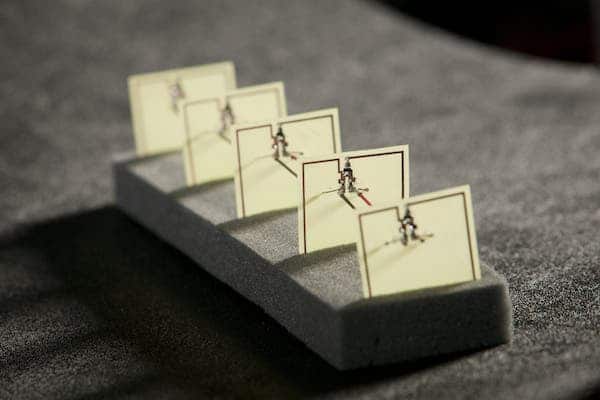
Using a range of cheap materials arranged in a specific manner, researchers at Duke University have demonstrated a device that captures microwave signals, such as those relayed by WiFi or even satellites high up above in Earth’s orbit, an converts this free, lost energy into electrical current. The harvesting and conversion efficiency of the device is on par with currently photo-voltaic solar panels. In the future, such circuits could be used to always wirelessly power your phone when it’s not in use or charge a battery in your home.
It’s enough to open your notebook just about anywhere downtown in a developed city to spot tens and tens of public WiFi hotspots. There are maybe tens of thousands of WiFi networks in a developed city, and all of these waste energy by constantly relaying microwave signals. The same applies to satellites, sound signals and other sources. What if you could harvest and cut the waste a bit?
This is what the Duke team of engineers, comprised of undergraduate engineering student Allen Hawkes, working with graduate student Alexander Katko and lead investigator Steven Cummer, set out to do. Using simple materials like five fiberglass and copper energy conductors wired together on a circuit board to form a five-cell metamaterial array. The resulting device harnesses microwave energy and converts it into direct current 7.3V electricity. For reference, your Universal Serial Bus (USB) charges small electronic devices with 5V, so a system coupled with the Duke metamaterial circuit could provide free charging for your mobile devices.
“We were aiming for the highest energy efficiency we could achieve,” said Hawkes. “We had been getting energy efficiency around 6 to 10 percent, but with this design we were able to dramatically improve energy conversion to 37 percent, which is comparable to what is achieved in solar cells.”
“It’s possible to use this design for a lot of different frequencies and types of energy, including vibration and sound energy harvesting,” Katko said. “Until now, a lot of work with metamaterials has been theoretical. We are showing that with a little work, these materials can be useful for consumer applications.”
Microwave harvester
Another application could be to improve the energy efficiency of appliances by wirelessly recovering power that is now lost during use.
“The properties of metamaterials allow for design flexibility not possible with ordinary devices like antennas,” said Katko. “When traditional antennas are close to each other in space they talk to each other and interfere with each other’s operation. The design process used to create our metamaterial array takes these effects into account, allowing the cells to work together.”
A metamaterial coating could be applied to the ceiling of your living room, for instance, to harvest free energy from microwaves that litter space all around us. A more interesting, and maybe more practical, application might be coating smartphones with a thin layer of mematerial directly, so your phone charges constantly with significant benefits for your battery life. It’s unclear though how much voltage a thin and small surface metamaterial circuit might provide.
“Our work demonstrates a simple and inexpensive approach to electromagnetic power harvesting,” said Cummer. “The beauty of the design is that the basic building blocks are self-contained and additive. One can simply assemble more blocks to increase the scavenged power.”
In remote locations, like in the desert or the middle of the wilderness, a series of power-harvesting blocks could be assembled to capture the signal from a known set of satellites passing overhead. The generated power would be far from impressive, of course, but it might still be enough to power a small array of sensors, the researchers believe.
Their device and findings were reported in the journal Applied Physics Letters.


